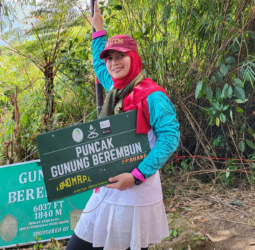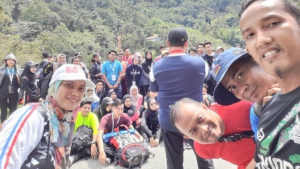https://www.msn.com/en-my/news/world/coronavirus-declared-global-emergency-by-who-after-1st-person-to-person-us-case/ar-BBZuGSg?li=BBr8Hnu&ocid=wispr

The World Health Organization declared coronavirus a public health emergency of international concern at a news conference Thursday in Geneva.
This is only the sixth time such an emergency has been declared, with past examples including the Ebola outbreak in the Democratic Republic of Congo and the Zika virus.
The WHO reserves the designation for “extraordinary events” that poses a public health risk by threatening to spread internationally.
The first case of human-to-human coronavirus transmission in the U.S. has been confirmed, in a patient in Illinois, the Centers for Disease Control and Prevention announced Thursday.
The transmission occurred between a husband and wife, who were in close contact with one another. The wife, a woman in her 60s, had traveled to Wuhan, China, and had been diagnosed with the virus last week. The husband, a Chicago resident also in his 60s and who has underlying health problems, had not traveled to China.
“The risk to the general public in Illinois remains low,” state health officials stressed. They said that they do not believe the virus is spreading widely in communities and are working to ensure health care workers at the hospital where the patient is being treated are protected.
Cases of human-to-human transmission previously have been reported outside of China, in Germany, Japan, Vietnam and Taiwan.
The best recommendations for Americans who are worried about at their health is to practice proper flu season hygiene, including frequent hand washing, covering coughs and keeping up-to-date on new information from the CDC. The CDC does not recommend wearing a face mask to prevent coronavirus.
“Our assessment remains that the immediate risk to the American public is low,” said Dr. Robert Redfield, director of the Centers for Disease Control and Prevention.
The transmission in Illinois marks the sixth case of coronavirus in the U.S.
The WHO deliberated for two days last week before deciding not to declare an emergency. Since then, however, patients from Germany, Japan, Taiwan and Vietnam have been diagnosed with the new coronavirus without having visited China. The new coronavirus is in the same family of viruses as the common cold and SARS.
That human-to-human transmission outside of China “worries us,” Tedros Adhanom Ghebreyesus, director general at WHO, said during a Wednesday news conference.
At last count, more than 7,700 people have been sickened by the novel coronavirus and 170 have died from it. More than 90% percent of those cases, and every death, have been in China.
According to WHO, 20% of cases are considered to be severe and 2% have been fatal. It’s expected that the fatality rate of the new coronavirus will decrease as more cases are reported, since the sickest individuals tend to seek medical treatment first.
In the United States, 165 people are under investigation for the new coronavirus. Of those individuals, 68 have tested negative and six have tested positive. The remaining individuals’ tests are in transit or have pending results.
Twenty American airports are screening passengers for signs of sickness and distributing educational materials the signs of coronavirus to people returning from China.
Airlines around the world have suspended some routes to China — United, Delta, American Airlines, British Airways, Air Seoul, Lion Air, Lufthansa Group, Cathay Pacific, Finnair, Air Asia, Air India, Air Canada, All Nippon Airways, Asiana Airlines and Korean Air.
This week, the U.S. government chartered a flight to evacuate 196 Americans from Wuhan, China. Those evacuees were screened and monitored for signs of illness before and throughout their flight. After landing in California, the passengers entered a voluntary three-day quarantine and will be offered testing for the virus, according to the Centers for Disease Control and Prevention.On Jan. 29, President Donald Trump announced that he was forming a coronavirus task force made up of top health, transportation, and national security officials. The team will coordinate efforts to respond to coronavirus and work to prevent the virus from spreading.





















